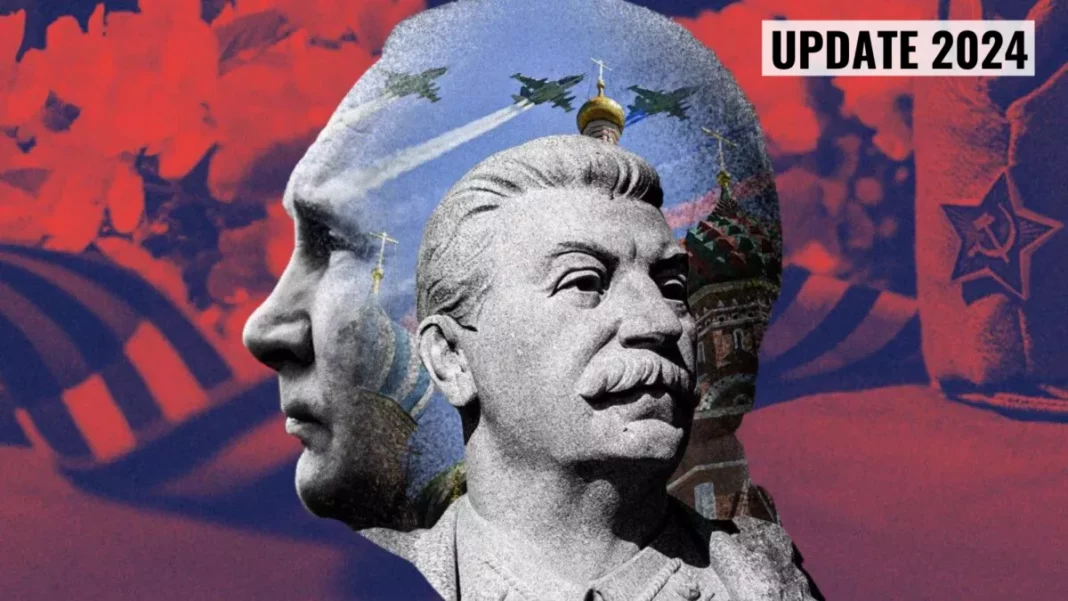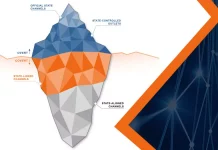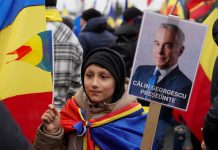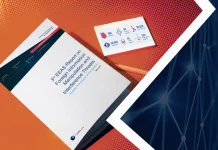By EUvsDisinfo
Update 8 May 2024
Putin just started another presidential term as an unchecked czar of Russia, continuing his rule since the year 2000. War has become the defining feature of his era and nowhere is this clearer that in the daily bombardments and attacks on Ukraine. Inside Russia, this feature will be especially clear during the 9 May parades.
From WWII victory to justification of today’s war against Ukraine
Originally a celebration of the USSR as one of the victorious powers in World War II, the parades have now become platforms for the manipulated justification of Russia’s ongoing war of aggression against Ukraine.
The irony of history is that Ukraine suffered no less than Russia in WWII and in relative terms even more: Ukraine was occupied almost entirely and became the scene of horrific fighting from 1941 until late 1944 during which immense destruction and the extermination of large population groups took place. A total of some 5 to 7 million people perished and Ukraine’s estimated population of 36 million in 1947 was almost 5 million less than before the war. 700 cities and towns and 28,000 villages had been destroyed with 10 million people left homeless. Only 20 percent of the industry and 15 percent of agricultural equipment was intact, and the infrastructure severely damaged.
Today, the 9 May parades featuring black and orange St. George ribbons have become the symbol of invaders of Ukraine and a sign of loyalty toward Putin.
Another irony is the cancellation of the ‘Immortal Regiment’-marches in large Russian cities – officially – due to (unspecified) ‘security reasons’. Rather, the real reason seems to be the Kremlin wanting to avoid large numbers of Russian citizens displaying photos of their loved ones killed recently in the war against Ukraine. Especially as experts now estimate 500,000 Russian casualties, hereof 150,000 dead. But the result of the cancellation is a failure to honour the WWII-veterans in a broad and popular way (see below).
The 9 May holiday reflects a highly militarised Russian society, forced blind loyalty to Putin, and displays of nuclear sabre-rattling wrapped in warmongering rhetoric and historic revisionism. Putin idolises Stalin and has resurrected his status to borrow some of the former despot’s clout. In doing so, Putin even contradicts himself, forgetting that during 2006-2010 he distanced himself from Stalin. For example, Putin recognised in 2010 the massacres committed by the Soviet NKVD against 22,000 Polish officers and civilians at Katyn. This recognition was based on research of the USSR archives and – importantly – a willingness to admit some of the wrongdoings of the Soviet system. This willingness had developed since the Gorbachev era and lasted until around 2011-12. But now it is turned completely upside down as our database of disinfo examples illustrates: the Russian government is back to the Stalinist-era denial that ‘the NKVD is not guilty anymore, it was the Nazis!’
Preparing for 9 May 2024, expect to hear much more historical revisionism and further lies about Russia’s war against Ukraine and more vitriolic threats towards the west.
—
Since 2008, Victory Day celebrations of the defeat over Nazi Germany have become yearly and turned into what some Russian opposition observers call ‘Victory Madness’ (победобесие). The scale and intensity of World War II’s glorification and of the Kremlin as an eternal defender against ‘Nazism’ have become unprecedented. But that was not always the case.
Four parades during Soviet times
In the Soviet Union, the public commemoration of Victory Day was limited, especially before 1965. On 9 May 1945, a large fireworks display in Moscow commemorated the defeat of Nazi Germany, while a historical Victory Parade on Red Square took place on 24 June 1945. In 1945, 9 May was declared a public holiday in the USSR, a status that it kept only until 1947. Immediately after the war, Soviet authorities and the Soviet population apparently believed that there was little to celebrate on 9 May. Victory had been achieved, but at a terrible and catastrophic price. The Soviet people, especially in the western parts including Ukraine and Belarus, paid for this war with tens of millions of casualties, enormous destruction, and suffering. In this context, 9 May was a regular working day until 1965.
Within the first two post-war decades, there were no large-scale public celebrations of Victory Day. The Parade took place only once, in 1945. The slogan flashed today by Russian leaders that ‘We can repeat it’ would have seemed barbaric and unacceptable as society was in a deep post-war shock for years.
The Brezhnev years
In 1965, Soviet leader Leonid Brezhnev declared Victory Day a public holiday. On 9 May 1965, he organised the second Victory Parade on Moscow’s Red Square. Apparently, Soviet authorities decided to boost ‘patriotism’ and manifest Soviet glory with the use of the victory over Nazism. Thus, it took two decades for the USSR to come to terms with the enormous catastrophe of WWII. Since 1965, Victory Day has been increasingly celebrated as a ‘happy’ holiday.
Regarding Victory Parades on Red Square, there were only four military parades in Soviet history – in 1945, 1965, 1985, and 1990. A military parade commemorating Victory Day was something very rare and unusual. This Day was mostly celebrated through civilian parades, fireworks, commemorative events, and meetings with veterans.
October Revolution day
It is important to remember that the main Soviet political holiday during the entire history of the USSR since 1918 was the anniversary of the October Revolution marked on 7 November. On this day every year, the USSR organised its main military parade on Red Square and flashed its military might as an integral part of Soviet culture. The main message did not focus on 9 May but used to be about the spread of communism and the inevitability of the coming world revolution.
Putin and ‘Victory madness’
Vladimir Putin came to power in 2000. Since 2007-2008, the Russian celebration of Victory Day has undergone a substantial shift. Putin, who threw down an open geopolitical challenge with his infamous 2007 Munich Speech confronting what he saw as ‘Western dominance’, decided to use Victory Day as a key element of his domestic propaganda. It was supposed to boost ‘patriotism’, glorify the Russian military, and mobilise the public in the face of the Western ‘threat’ to Russia.
Since 2008, fundamental changes under Putin’s rule
Under Putin’s rule, several fundamental changes appeared in Victory Day celebrations.
Before 2008, the core of Victory Day was a tribute to WWII victims and veterans. On this day, the society commemorated all the war’s atrocities and the heroism of its survivors who shared their terrible memories with the message that such events should never be repeated.
After 2008 – following Russia’s war on Georgia in August of that year – the idea behind the Victory Day celebrations turned from ‘Never again’ to ‘We can repeat it’. Under Putin, the day turned into an aggressive ritual promoting Russian military might, the Kremlin’s willingness to use military force against its adversaries, and a day glorifying warfare itself and all its atrocities.
New rituals…
Since 2008, Victory Day parades have become yearly and the quantity of military equipment displayed has grown dramatically. In addition, the Russian air force began to take part in the Moscow parade. Even in Soviet times, flights of combat aircraft over the Russian capital were extremely rare. Also after 2008, Russian authorities invented new Victory Day rituals not used during Soviet times, at least not on such a large scale. First of all, Putin replaced the old Soviet symbols (the Red Flag) with the orange and black St. George Ribbon, which became the main emblem of Putin’s own ‘Victory Day’ while the Red Flag became secondary.
…the ‘Immortal Regiment’
As WWII veterans have gradually passed away, attempts to reinvent or rejuvenate 9 May were made. Russian authorities also started organising massive public marches of the so-called ‘Immortal Regiment’, where regular Russians marched with pictures of their grandfathers who took part in WWII. It was originally a grass-roots initiative which the Kremlin then appropriated. These ‘Immortal Regiment’ marches gathered millions of regular Russians. They became the largest public demonstrations in recent Russian history. Many people marched by their own decision but there are also many accounts of students and school children being mobilised to fill the parades and display pictures unknown to them but handed out by organisers.
In 2023, the full-scale Immortal Regiment parade was cancelled on 18 April but replaced with calls for people to join virtual on-line parades. It might be that authorities feared the parade could become a symbol of dissent if people displayed pictures of loved ones killed in the ‘special military operation’, where official casualty figures are rarely reported and kept unrealistically low.
The West becomes the enemy
The main slogan of Putin’s Victory Day is ‘We can repeat it’. In parallel, there has been an ever stronger downplaying of the importance of the material support received from the Western allies during 1941-1945. As Stalin and Khrushchev recognised, ‘Without the machines we received through Lend-Lease, we would have lost the war’. Instead, claims now allege that Lend-Lease ‘did not play any decisive role’. Most people have come to believe this position.
Now, the main enemy is also clear – the present-day ‘Fascist/Nazi’ West. Putin’s propaganda still promotes the message that Russia is not afraid to ‘repeat’ a terrible war with tens of millions of casualties and enormous losses and destruction only to show its ‘greatness’ and ‘glory’.
This trend accelerated during the 2010s, picking up stream after the 2014 invasion and illegal annexation of Crimea. On 9 May 2022, a few months into the full-scale war against Ukraine, Putin devoted most of his speech to lashing out against the West and defending the invasion of Ukraine.
2022: less military equipment
2022 marked a shift in the quantity and quality of military equipment displayed in Victory Day military parades. Combat aircraft, for example, did not participate because of ‘weather conditions’, according to authorities. But many experienced pilots and aircraft have been lost during operations in Ukraine. It remains to be seen how many aircraft will appear in this year’s parade.
This year, even without ‘Immortal Regiments’ to fill the streets, one thing seems certain. Putin’s speech and rhetoric will be vitriolic. If the quantity of military hardware is lower than last year, his words will try to compensate. The recent incident with drones over the Kremlin seems only to reinforce a more hard-line tone. We saw a precursor earlier this year during his speeches at the memorial events for the Leningrad Blockade and the Stalingrad battle where he called these times an existential battle for Russia.
By EUvsDisinfo





